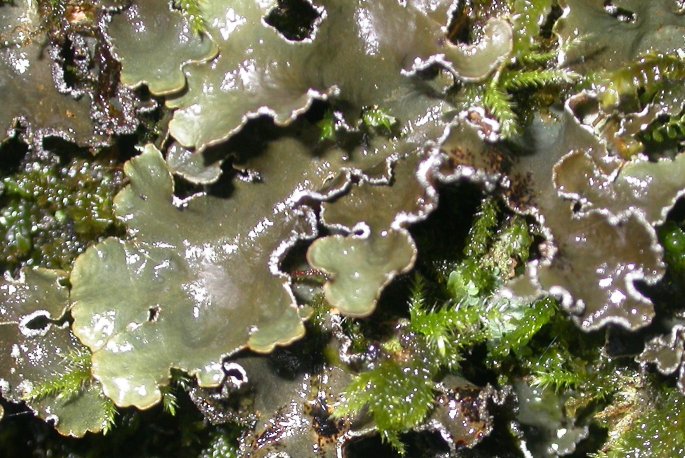Pseudocyphellaria intricata
This is a substantial foliose lichen with, when moist, a brown (café au lait) thallus that becomes grey-brown on drying out. Its surface is smooth, though it may develop rather weak ridges. The purple grey coloured eruptions of soralia along the lobe margins may spread as scattered dots or somewhat more elongated squiggles over the surface of the thallus. They are a prominent feature. It might be mistaken for a Sticta, Nephroma or a Peltigera. The undersurface of Pseudocyphellaria and Sticta is covered in a dense, dark brown stubble of rhizines amongst which are small sunken bald patches, called pseudocyphellae in this species and give it its generic name and the English name of the Americans-the speckle bellies and true cyphellae in Sticta. In practice the differences between theses structures can only be observed with difficulty under a microscope. In Sticta limbata the undersurface and rhizines are much paler in colour and the rhizines less well developed and the lobes tend to be more or less circular in outline and remain discrete. P. intricata develops somewhat elongate overlapping lobes. S. sylvatica smells of fish when wet. Peltigera has large bushy, rather widely spaced rhizines and Nephroma a bare undersurface.

Photo: Ray Woods
PLEASE NOTE. All Pseudocyphellarias appear to be exceptionally rare in
There have been three Pseudocyphellaria species recorded from
- Read more about Pseudocyphellaria intricata
- Log in to post comments
